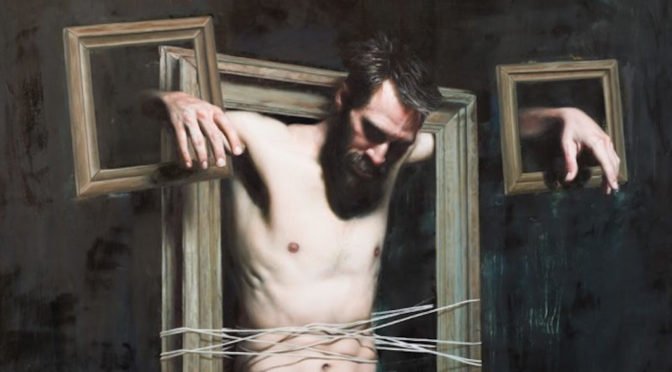Many museum visitors are aware that a single drop of moisture can destroy a drawing, watercolor, gouache, or tempera but rarely consider how vulnerable they are to UV damage. Varnished oil paintings do not need this protection and therefore making it perplexing when we see one under glass in a frame.
As a trained curator, when I see a covered painting I see it as a major clue the work has either traveled between many museums or been loaned by one.
Glazing is the term used by museums to indicate a painting is protected by glass or Plexiglas. Museums often ask for work that is going to travel a great distance without crating to be glazed. Crating is extremely expensive and can run into the thousands per painting.
Museum glass is not the same glass you buy at your local hardware store, but a special conservation glass that offers increased UV protection (99%) and reduces reflections. Glazing does not sit directly on top of an oil painting but sits over a mat or mount in front of the painting.
In addition to providing impact protection, environmental extremes and physical damage, glazing also protects the painting from microbiological hazards, pollution, touching, and dust and dirt.
According to The Tate Museum in London, “glazing is seen by most conservators and curators as a necessary evil and any advantages must be offset against well known disadvantages such as reduced visibility (including reduced light transmission, reflections, colour casts, distortions); potential breakage and damage to the artwork; additional weight, cost and labour involved; possible structural or aesthetic unsuitability of the frame; and other issues such as static, condensation and thermal instability.”
Occasionally, what we are seeing over a painting is not museum glass but museum grade acrylic. Often called by the brands most in demand, “Optium” or “True Vue” they are virtually scratch proof and nearly unbreakable, but much more expensive.
It’s rare to see a modern or contemporary painting glazed because so many have floating edges (called a gallery wrap) or are unframed completely. Paintings pre 19th century were not considered finished without their frame and never would have been displayed as such. It is much more common to see work from the 1800’s or earlier glazed.

Thank you for reading this article.
For more articles on what galleries look for in an artist and other art eccentricities, please click through the links below.
- What Galleries Look for When You Submit Your Art for Representation
- Art Critics: Keeping Art In Its Proper Framework
- Museums In The 21st Century: The Invisible Intimacy Of Public Palaces
Cover image: Painting by Mitch Griffith, Detail of “ Man In The Frame”

